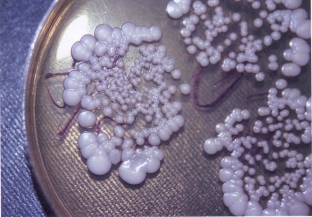What is candidiasis, and what are the reasons for its development, we considered in a previous article on estet-portal.com. In order to timely diagnose candidiasis, it is important to know its manifestations. Candidiasis can affect the skin between the fingers, the skin of the palms, soles, candidiasis of the nail folds, candidal balanoposthitis is known. The disease can manifest itself as a rare skin lesion - granulomatous candidiasis. Manifestations of candidiasis of different anatomical regions differ in the mechanism of development and clinical manifestations. What are the main manifestations of candidiasis?
Manifestations of candidiasis of the interdigital folds of the hands and feet
Interdigital candidal erosion is observed mainly in persons who have prolonged contact with water, which contributes to the development of skin maceration, and, as a result, favorable conditions are created for the development of candidal infection. In addition to the folds between the 3rd and 4th, 4th and 5th fingers, others can also be affected, and not only on one, but on both hands. Patients are disturbed by itching, burning sensation, and if there are cracks, soreness. The course of the disease is chronic, with frequent relapses.
Nipple smooth skin candidiasis can develop in breastfeeding women. Clinical manifestations can be different: in the form of hyperemia in the areola; in the form of a hearth near the nipple with maceration; in the form of a crack with maceration along the periphery.
With a special type of disease - chronic generalized (granulomatous) candidiasis - the clinical manifestations of candidiasis on the skin can be very diverse.
Candidiasis of the palms and soles is rare, according to estet-portal.com. Candidiasis of the skin of the soles is observed mainly in children and is characterized by the presence of small vesicles and pustules, hyperemic spots with peeling and exfoliating macerated epidermis along the periphery.

Variants of manifestation of candidiasis of the palms:
- On the palms, the disease can proceed as a dry lamellar disturbance - dyshidrosis (superficial lamellar, annular or garland-like peeling).
- Manifestations of candidiasis may be vesicular-pustular in nature (vesicles and pustules against the background of hyperemic and edematous skin).
- The disease can proceed as hyperkeratotic eczema (against the background of diffuse hyperkeratosis or separate areas of keratinized skin, sharply limited wide skin furrows of a dirty brown color are observed).
Clinical manifestation of candidiasis of the nail folds
Manifestation of candidiasis of the nail folds (candidiasis paronychia) begins with damage to the posterior ridge, more often in the area of its transition to the lateral ridge, with the appearance of hyperemia, swelling and swelling of the skin. Then the inflammatory phenomena spread to the entire roller, which becomes thickened and, as it were, hangs over the nail, peeling is observed along the edge of the roller.
The skin of the roller becomes thin, shiny, the eponychion disappears. When pressing on the roller, an ichor, a lump of white crumbly mass or a drop of pus may be released (due to the addition of a secondary infection).
Manifestations of candidiasis of the nail fold include a change in the nail plate: it becomes dull, separates from the bed in the alveolar area, collapses like onycholysis, or transverse furrows and elevations appear.
In young children, inflammation in the area of the roller is more pronounced, and the nail plate changes from the distal edge. There is candidiasis of the nails without inflammation of the roller. In this case, the change in the plate begins from the distal edge and develops according to the type of onycholysis: the plate becomes thinner, does not adhere to the bed, multiple nail lesions may occur.
Clinical manifestations of candidiasis of the skin of the penis
Candidiasis balanoposthitis is quite common. The disease can proceed in a mild form with a slight lamellar annular peeling or be more pronounced. In this case, hyperemia, maceration, erosion appear on the skin of the glans penis and the inner leaf of the preputial sac, as well as in the coronary sulcus on the adjacent surfaces. Skin looks wet. Subjectively, patients are concerned about itching and burning sensation. The disease can be complicated by ulceration and the development of phimosis.






Add a comment